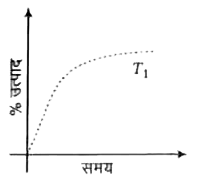N2+3H2(g)⇔2NH3(g)+Heat
a) What change is to be madein pressure to get maximum yield of the products.
b) What is the change in concentration required for increasing the rate of the forward reaction?Solution in Malayalam
Step by step video & image solution for N_(2)+3H_(2)(g)Leftrightarrow2NH_(3)(g)+Heat a) What change is to be madein pressure to get maximum yield of the products. b) What is the change in concentration required for increasing the rate of the forward reaction? by Chemistry experts to help you in doubts & scoring excellent marks in Class 10 exams.
Updated on:21/07/2023Topper's Solved these Questions
Similar Questions
Given below are two chemical equations.
a. CH2=CH2+H2→A
b. A+Cl2→B+HCl Identify the compounds 'A' and 'B' . Name these reactions.
View SolutionExamine the data given in the table (Temperature and number of molecules of the gas are kept constant).
a) Calculate P x V.
b) Which is the gas law related to this?
'(##VPU_TTT_CHE_X_P01_C02_E01_001_Q01##)'
View Solutionthe equillibrium constant KP for the reaction ,
N2(g)+3H2(g)⇔2NH3(g)
1.6×10−4(atm)−2at400∘C if heat of the reaction in this temoerture range is -25.14 kcal ?
View SolutionThe heat change for the reaction, N_(2)(g)+3H_(2)(g)to2NH_(3)(g) is -92.2kJ. Calculate the heat of formation of ammonia.
View SolutionIncreased pressure shifts the equilibrium of the reaction: N2(g)+3H2(g)↔2NH3(g) so as to
View Solutionconsider the following reaction, N_(2)(g)+3H_(2)(g)hArr2NH_(3)(g) The rate of change of concentration for nitrogen is -0.3xx10^(-4)Ms^(-1). The rate of change of concentration of ammonia is
View SolutionThe formation of ammonia from N2(g) and H2(g) is a reversible reaction
N2(g)+3H2(g)⇔2NH3(g)+Heat
What is the effect of increase of temperature on this equilibrium reaction
View SolutionFor the reversible reaction N_(2(g))+3H_(2(g))hArr2NH_(3(g))+"Heat" . The equilibrium shifts in forward direction.
View SolutionN_(2)(g) + 3H_(2)(g) rarr 2NH_(3)(g) + heat .What is the effect of the increase of temperature on the equilibrium of the reaction ?
View Solutionअभिक्रिया, N2(g)+3H2(g)↔2NH3(g), ΔH<0 में अमोनिया के प्रतिशतता उत्पाद (% yield) की समय (time) पर निर्भरता (p,T1) पर नीचे दर्शाई गई है
यदि यह अभिक्रिया (p,T2) पर की जाए, जहाँ T2>T1, अमोनिया के % उत्पाद की समय पर निर्भरता प्रदर्शित करता है

View Solutionसाम्य पर अभिक्रिया, N2(g)+3H2(g)⇔2NH3(g) का दाब दस गुना बढ़ाने पर, Kp होगा
View SolutionFor the reversible reaction, N_(2)(g)+3H_(2) (g) Leftrightarrow 2NH_(3) (g)+" heat" . The equilibrium shifts in forward direction (1) (1) By increasing the concentration of NH_(3)(g) (2) By decreasing the pressure (3) By decreasing concentration of N_2(g) and H_2(g) (4) By increasing the pressure and decreasing temperature
View Solutionअभिक्रिया N2(g)+3H2(g)<⇒2NH3(g) में ΔH=−93.6kJ है, अमोनिया की लब्धि (yield) नहीं बढ़ेगी, यदि
View Solutionउत्क्रमणीय अभिक्रिया N2(g)+3H2(g)↔2NH3(g)+ ऊष्मा
ऊष्मा के लिए साम्य अग्र दिशा में विस्थापित होगा |
View SolutionThe effect of a tenfold pressure increase on the equilibrium composition of the reaction N_(2)(g)+3H_(2)(g)hArr2NH_(3)(g) is
View Solution
